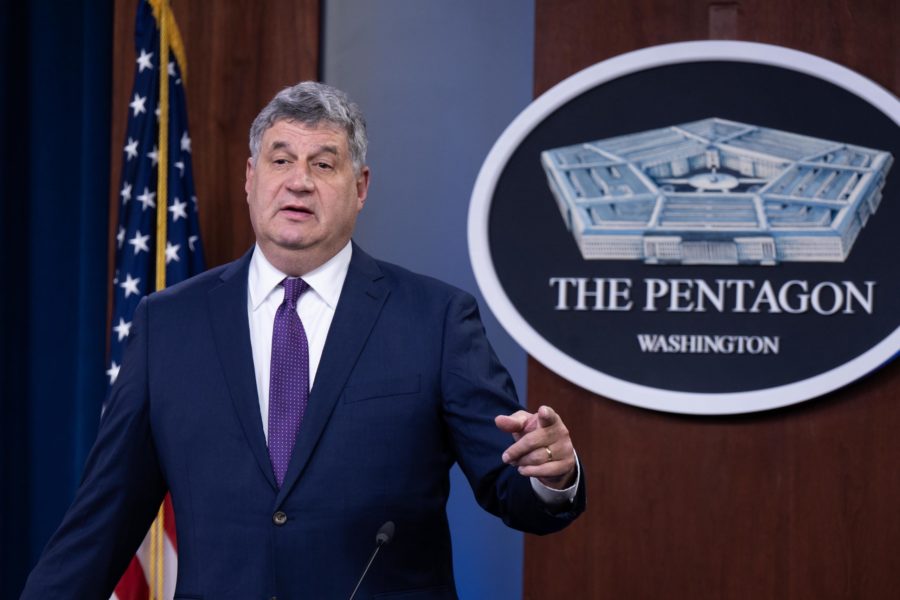Fresh off a meeting of the national armaments directors of NATO and the European Union, Pentagon acquisition and logistics chief William A. LaPlante said the allies and partners are moving toward not simply interoperable munitions, but “interchangeable” as well, with production in numerous locations to meet the needs of a new security environment.
The 45 directors met to discuss how they will provide military aid to Ukraine and also how to structure their defense industrial bases for a new normal driven by Russia’s invasion and other factors, LaPlante told reporters on a Zoom call Sept. 30.
“Besides comparing notes about how you’re helping Ukraine,” LaPlante said of the meeting, the group discussed “what is the right NATO force in the future that will continue to deter, in this case, Russia.”
The conversation rapidly turned to setting standards so that, for example, 155mm rounds manufactured in one partner country will work with the tubes of any other.
“That’s where we need to go” in terms of being “interchangeable,” LaPlante said.
There was also discussion of how to continue to evolve Ukraine’s weapons portfolio toward “NATO standard,” LaPlante said.
To get to affordable scale and interchangeability, LaPlante forecast “multi-country procurements” of weapons produced in a number of locations, both for deterrence but also to rapidly increase production in situations like the present one in Ukraine, where munitions are being consumed rapidly and threaten to empty alliance stocks. This will be done “not for everything, but where it makes sense,” he said.
There may need to be some “socialization” with Congress and other interests, but LaPlante said the need is clear for joint procurements and “even development” of new weapons, with multiple production lines.
These moves will help address “some of the supply chain issues” that NATO and the EU are coping with.
The 45 participants agreed to break up into smaller working groups to address specific areas of concern. The industrial base today does not offer enough suppliers and capacity in the fields of microprocessors, ball bearings, and solid rocket motors, LaPlante said.
Regarding assistance to Ukraine, Deputy Undersecretary of Defense for Policy Sasha Baker said that “what you’re seeing is a recognition amongst the partners and allies that we’ve made a commitment, now, for the long haul” and to sustain Ukraine’s military capabilities “over the long term.”
“We have to start that now because we know that some of the contracting timelines and the production timelines … for some of the equipment that the Ukrainians will need, it’s going to take six to 12 to 18 months.” LaPlante agreed that the long lead times for some components demand longer-term planning.
The Russian invasion has focused the group, and the conversation will “drive actionable progress,” he noted.
LaPlante also said the group hopes to give industry members the “demand signal” it says it is always looking for to decide if whether it should invest in munitions-building capabilities at scale.
“We discussed exactly what … that really means,” he said.
“The industry, both in our country and around the world, want to know is there a sustainable longer-range plan for … production, so that they can invest [in] … production lines that will be enduring, and not the typical “feast or famine” of nations buying in “panic mode,” returning to “minimal production when the crisis is over,” LaPlante said.
NATO and the EU plan to move toward “more stable” buying arrangements, he said, “looking at the world ahead.”
Baker said the Biden administration “at every level” is committed to helping Ukraine in its “fight for sovereignty and in their fight to regain their territorial integrity. So I’m really delighted that our meetings were able to advance the ball in strengthening the position of this collective group of allies and partners who’ve all made the same commitments.”

